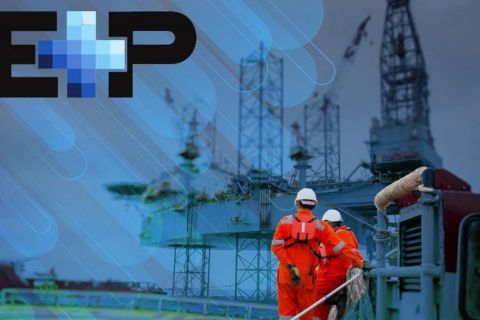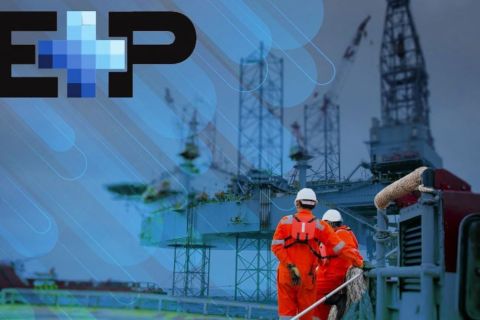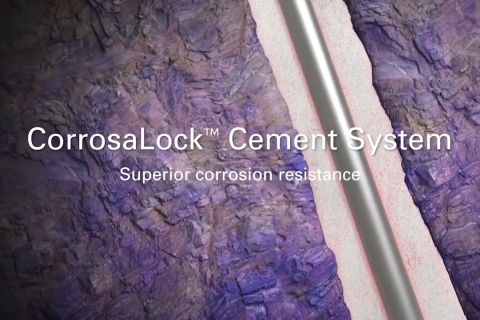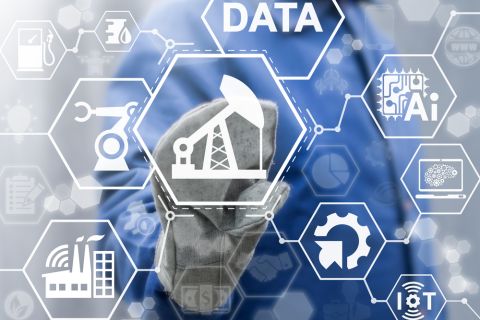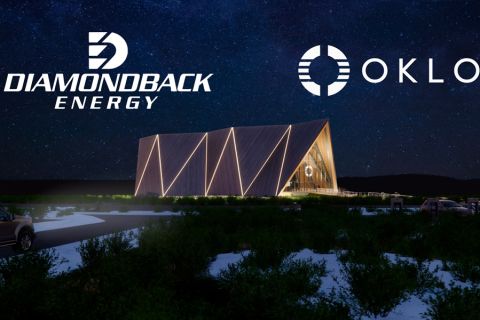The trend in seismic data acquisition is to collect more and more data to further improve the quality of imaging and inversion. The number of recording channels follows Moore’s law of seismic data acquisition (Figure 1). This figure shows that systems of more than 1 million channels can be expected in the near future. On land the number of geophones per channel is generally more than one, meaning that in the future millions of geophones must be planted to record the response of a single shot.
But there is more. A strong increase on the source side is anticipated as well. The current trend is blending (also referred to as simultaneous shooting). In blended acquisition a crew no longer needs to wait to fire the next shot until all echoes of the previous shot have been captured. As a consequence, the number of shots increases considerably within a given survey time, leading to improved subsurface illumination and better image quality with favorable economics.
Recently, the Delphi Consortium introduced the dispersed source array (DSA) concept for blended acquisition that replaces seismic arrays of complex broadband sources by distributed arrays of relatively simple narrow-band sources.

FIGURE 1. The number of seismic recording channels obeys Moore’s Law (based on a figure by D. Monk, Apache Oil) and extends to the future. (Source: Delft University of Technology)
From the above acquisition trends it is clear that the current-approach seismic surveying will become a logistical nightmare. Therefore, robotizing seismic data acquisition seems an inevitable next step. An extra argument is that the HSE issues associated with surveys that are increasingly carried out in human-unfriendly areas like polar regions, mountainous terrains and remote deserts can be successfully addressed by the use of robots.
Robot vibes on land
In the concept of blending, where recording is largely continuous and shots are fired while the echoes of previous shots are still being captured, the sources may be fundamentally different. Rather than trying to produce the optimum signal by each localized single shot, which leads to complex sources with a compromised design, blending a diversity of distributed simple sources can produce a much better signal, not simultaneously but in a blended fashion. This is because the bandwidth of the individual sources may be relatively narrow as long as the total bandwidth is covered by the combination of sources. Compare this with modern home or car audio systems, where a distribution of diverse loudspeakers with different limited bandwidths deliver the full temporal and spatial bandwidth of high-quality sound.
The broadband seismic vibrator is the most common land source. It transmits sweeps with frequencies ranging from 5 Hz to 100 Hz. It is a major technical challenge to design and manufacture a single vibrating source that is capable of transmitting such a wide frequency band without distortion. These vibrators are heavy, expensive pieces of equipment. The concept of blended acquisition with DSAs is most suitable for vibrators. Instead of using one broadband vibrator unit, a blended array of different vibrator units is used with relatively narrow bandwidths (e.g., low, mid and high frequencies) and different spatial sampling intervals, together producing a large temporal and spatial bandwidth. Blended land acquisition with DSAs may create a new generation of vibrators that are optimized for a small frequency band, allowing simpler designs and smaller units for the high frequencies. Such vibrators could be based on principles other than hydraulics; e.g., they could be driven in an electromagnetic way. They are the prime candidate to function fully autonomously.

FIGURE 2. This cartoon shows autonomous seismic vibrators, each representing an optimized narrow-band source. All of these robot vibes form together a DSA. DSAs cover the full spatial and temporal bandwidth to illuminate the subsurface in an optimum way. Spatial sampling is source-dependent. (Source: Delft University of Technology)
Robotization in seismic acquisition can be compared with the current revolution that is emerging in the car industry, with unmanned and self-driving vehicles on the public road. The schematic shown in Figure 2 describes a distribution of unmanned vibes, each of them covering only a small part of the total bandwidth but together representing DSAs. They produce a spatial and temporal bandwidth that illuminates the subsurface beyond current capabilities.
Seismic remote sensing
The properties of the Earth’s surface can be determined in a very accurate way from radar interferometry data obtained by satellites. This technology is already being used in the oil and gas industry to measure changes at the surface caused by the effects of steam or by CO2 injection in reservoirs by or the effects of gas storage. In such cases, the height of the Earth’s surface changes as a result of changes in the subsurface. Obviously, such changes are slow, meaning that they are characterized by very large spatial and temporal scales. This explains the success. Note that a time scale in the order of a week corresponds to a frequency of 10?6 Hz.
Of course, in the seismic method geoscientists are interested in frequencies up to the order of 102 Hz. Furthermore, they are aiming at displacements of millimeters down to nanometers. This means that there are still large gaps, both temporal and spatial, between what current remote sensing technology delivers and what is required. In Delphi’s robot project the goal is to close this gap, starting with the very low seismic frequencies and large displacements.

FIGURE 3. Seismic remote sensing is combined with a limited number of specially designed flying calibration sensors. This concept is considered the holy grail in seismic acquisition. (Source: Delft University of Technology)
For calibration purposes the seismic remote sensing information is supplemented with sparsely distributed calibration sensors referred to as autonomous transition multirotor observation vehicles (ATMOVs). ATMOVs are the latest technical creation from the Micro Aerial Vehicle Lab at Delft University. The application concept is shown in Figure 3, and Figure 4 shows the current model.
Important characteristics of an ATMOV are its ability to take off and land vertically as well as to hover like a helicopter but fly efficiently like a plane. In the Delphi vision, a swarm of ATMOVs provides support in the remote sensing scenario as “flying calibration sensors”: The ATMOVs carry the calibration sensors to the required positions, perform the seismic measurements and return to their base once the mission has been completed. In addition, they may carry out other tasks.
Robotization and automation
In addition to acquisition, seismic processing also will become more a matter of intelligent systems and less a matter of human processors. The classical human processor will disappear in the emerging automation wave. This vision, however, does not imply that smart algorithms on powerful computers will take over all of the imaging work in the future. Computers will not replace geophysicists on creativity issues such as imaging strategy and residue analysis, particularly for land.
Without robotization, however, the trend of increasing numbers of sources and detectors in seismic acquisition will level off.
For sensing, the holy grail is to combine advanced airborne sensing technology to simultaneously record the seismic response of an entire area. In the Delphi Consortium, a long-term innovation project on the robotization of seismic acquisition has started. Robots will do all kinds of tasks that they fulfill better than humans, particularly in unsafe areas.

FIGURE 4. A hovering ATMOV prepares to plant a calibration sensor. When flying longer distances, the wing is rotated 90 degrees, allowing high speeds. (Source: Delft University of Technology)
Acknowledgment
We acknowledge the sponsors of the Delphi consortium at Delft University of Technology for the stimulating discussions on robotization, and we thank all sponsors for their financial support.
References available on request.
Recommended Reading
E&P Highlights: March 11, 2024
2024-03-11 - Here’s a roundup of the latest E&P headlines, including a new bid round offshore Bangladesh and new contract awards.
E&P Highlights: April 22, 2024
2024-04-22 - Here’s a roundup of the latest E&P headlines, including a standardization MoU and new contract awards.
Tech Trends: Halliburton’s Carbon Capturing Cement Solution
2024-02-20 - Halliburton’s new CorrosaLock cement solution provides chemical resistance to CO2 and minimizes the impact of cyclic loading on the cement barrier.
The Need for Speed in Oil, Gas Operations
2024-03-22 - NobleAI uses “science-based AI” to improve operator decision making and speed up oil and gas developments.
Diamondback May Go Nuclear to Power Permian Basin Ops
2024-04-08 - Oklo Inc., a California fission power plant developer, on April 8 said it signed a letter of intent to collaborate with Diamondback Energy on implementation of nuclear energy for drilling operations in the Permian Basin.

